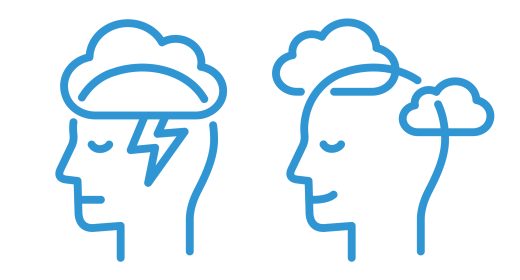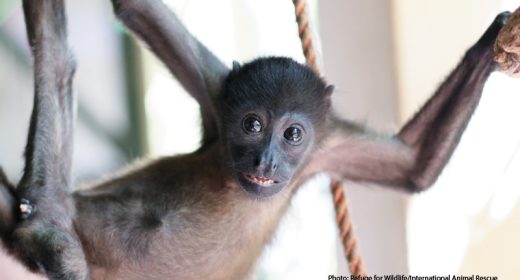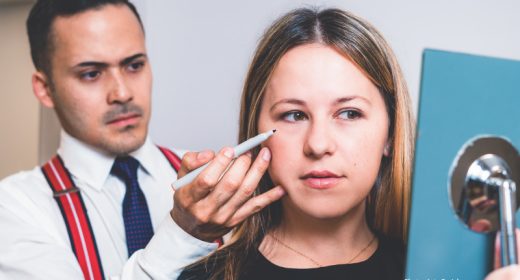
Now Begins the Study of Yoga
- NOV 21, 2016Warning: count(): Parameter must be an array or an object that implements Countable in /home/howlermag/public_html/old/wp-content/themes/new-paper/includes/general.php on line 193
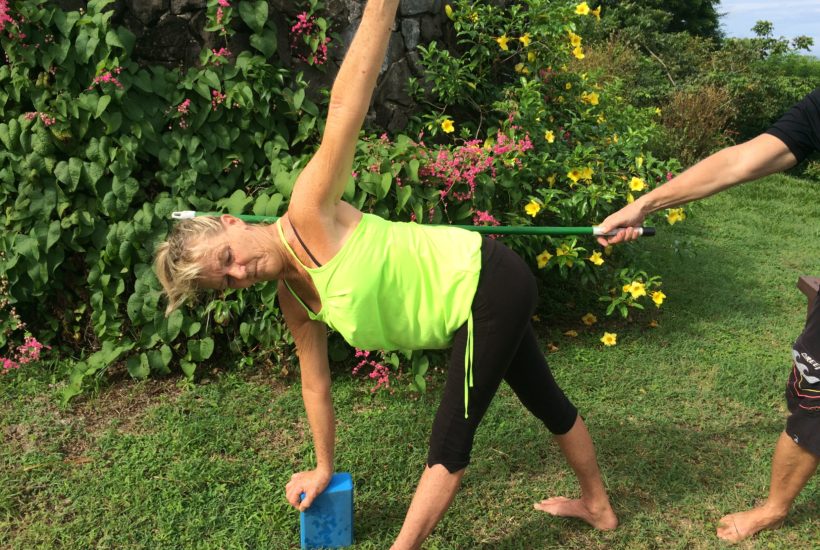
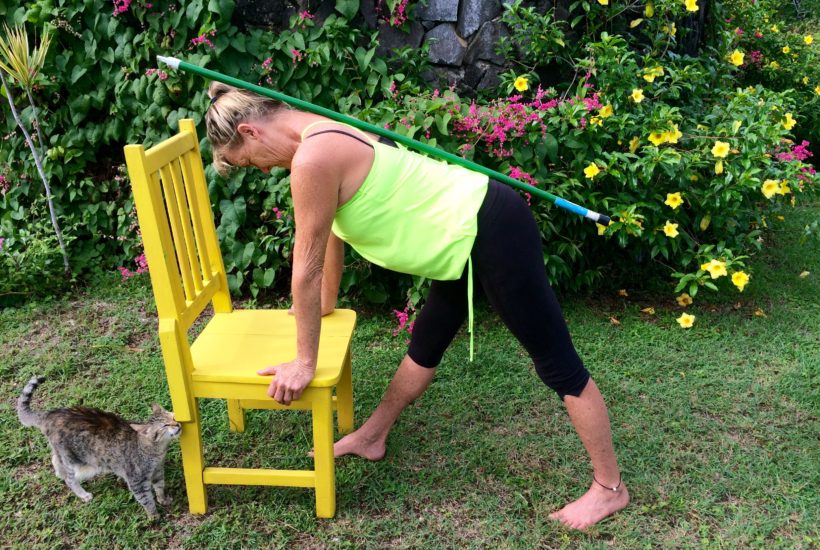

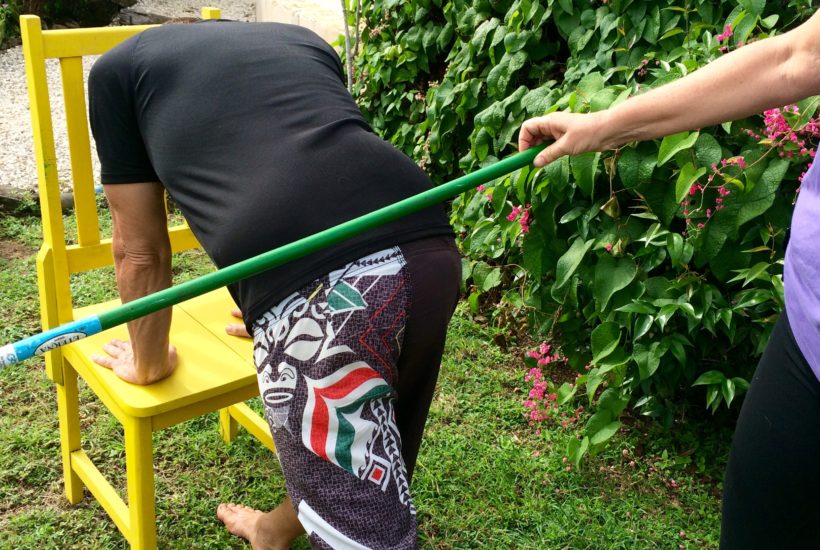

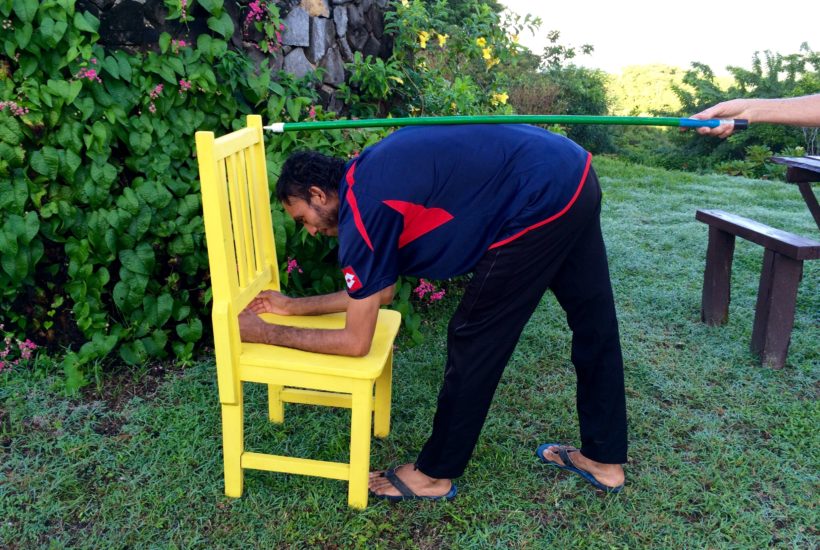

One of the reasons that I think a good teacher is so important in yoga, is that they make the difference between what is great for you to do, or what can lead to hurting yourself over time. Parivrtta Trikonasana, known as revolved triangle pose, is a pose that can challenge yogis on many levels. It requires balance, flexible hamstrings, flexibility and strength from the hips, rotation in the spine, and the dance of steadiness and ease (sthira and sukha). There are some wonderful benefits and there are a number of variations, so that everyone can participate, with the knowledge of how to do the pose safely.
There are two main aspects of the pose: a forward bend and a spinal twist. The most important
thing to remember in doing this pose is to keep the integrity of those two actions, so that you don’t
hurt yourself. The forward bend needs to be generated by the tilting forward of your pelvis, and the
twist needs to come from the rotation of the spine. Potential injury can happen if the reverse is
allowed – the forward bend happening from the spine and the twist coming from the pelvis. For
many people, the final pose, where the hand goes all the way to the floor can only be
accomplished by bending in the spine, so I will show you two of the other ways you can do this
pose to help make it safe and accessible for most people.
Begin with a chair, seat facing towards you at one end of your mat. Step your right foot under the
chair seat, with your feet and legs in a Warrior I position. Balance you weight evenly into both feet.
As you inhale, lift your arms overhead, and on exhale, lengthen your spine as you fold forward and
put your hands on the chair seat. Notice you can see the line of the spine when I place a broom
handle along the model’s backs. This line you see in the first photo is what you want before you
add the twist to the pose. If this height feels good, and you can bend forward from the pelvis easily
(your hamstrings are not screaming at you!), you can try going onto the elbow on the chair seat
(second photo).
The third photo shows the set up from the back, with the L hip beginning to drop, so not safe for
the twist yet! The fourth photo shows him getting his hips and the line of the spine back into place.
It is really important that you take time to work with where your body is at, so over time you are
working to maintain or improve things in your body, rather than hurting yourself through repetitive
actions that are harmful. With his hand on the chair, Peter is able to work to make this a safe pose
for him to do, and to work with awareness of how to keep his spine in a healthy position. In the fifth
photo, you see how putting his elbows on the chair makes it impossible for Abad to keep the line of
his spine – he is forward bending partly from the spine rather than completely from his hips, and
you can also see the front leg bending, indicating this is too low for his body at this time.
In the sixth photo, you will see Debbie with hand on block in the twist of this posture along with the
forward bend. She is keeping the spine elongated in the forward bend at this height and her spinal
rotation is fairly good as well. When you work with this pose, take photos or a video of yourself so
that you can see if you are doing this safely. Parivrtta Trikonasana has wonderful benefits:
improves circulation and digestion; strengthens and stretches calf, thigh, hamstring, and abdominal
muscles; lengthens and strengthens muscles of the spine; broadens the chest, collarbones, and
shoulders; tones kidneys, liver, spleen; and improves balance. As in all of the asanas of yoga, a
little knowledge of how to do it well for your body will make it a healthy practice.
Namastè,
Mary


